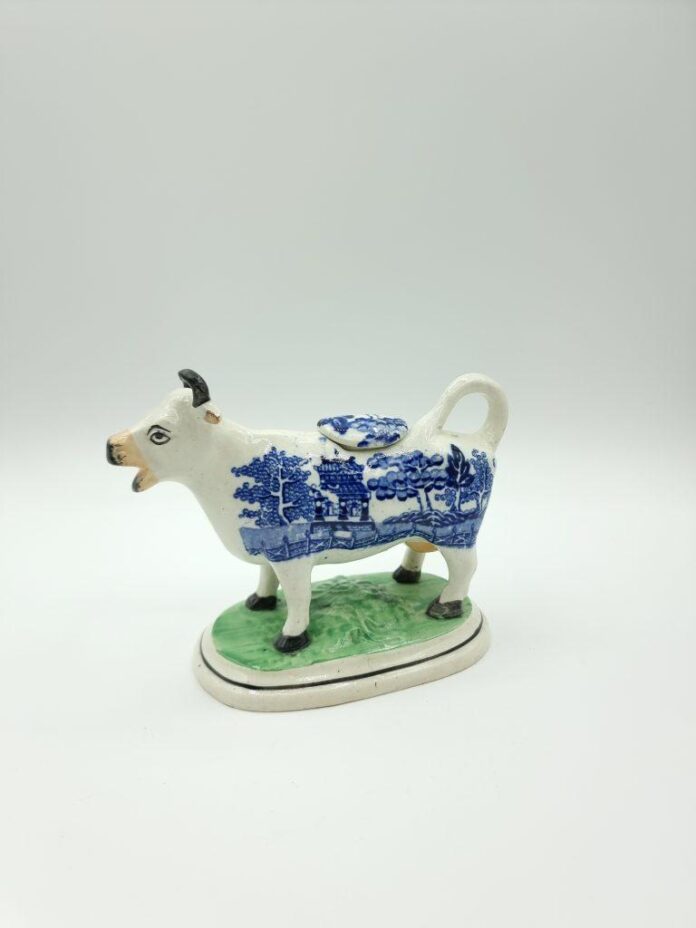Forget avocados, chia seeds, and leafy greens—milk is the OG superfood. With the advent of nutrition science in the early 20th century, milk took on a quasi-miraculous status as a source of fat, carbohydrates, protein, and newly discovered vitamins. It duly became a mass-produced staple of Western diets reshaping cultural and physical landscapes in the process.
This mythic transformation is the subject of “Milk,” a major exhibition at London’s Wellcome Collection that is set to run through September 30.

Installation view of “Milk” at the Wellcome Collection, 2023. Photo: Steven Pocock.
The museum was established in 2007 to challenge public perceptions of health by leveraging the disparate powers of science and art and “Milk” fulfills this mission. The exhibition presents more than 100 items including government posters, promotional films from dairy companies, a herd of cow-shaped creamers, and a handful of bold commissions. Perhaps unsurprisingly, it’s the first exhibition to deconstruct the complex history of the dairy product.
The exhibition also casts an eye on that other milk, the human kind. Early on, visitors encounter Julia Bornefeld’s dangling sculpture that is simultaneously evocative of cow udders and a human breast. In another work, the video piece (2023), Ilana Harris-Babou’s explores Black motherhood through familial conversations about nursing.
If breastfeeding continues to occupy an uncomfortable place in Western society, “Milk” suggests it may be the product of exclusively associating milk with cows for the past century. Though the roots of this consumption run deeper, as the exhibition shows through historical objects dating back thousands of years, they were supercharged by governmental and industrial forces in the 20th century. Dietary guides printed by the British Medical Association and milk formula tins from the likes of Glaxo make this clear.

poster Photo: © IWM (Art.IWM PST 4944)
Milk is also intrinsically tied to whiteness. With its status as an early superfood, milk was deemed an essential product to maintain the strength and wellness of white communities. The exhibition tracks this thinking sometimes implicitly, such as by displaying dairy product marketing campaigns featuring smiling white families, and other times rather more explicitly, as in the case of a butter advert in from 1920 in which the future U.S. President Herbert Hoover declared dairy essential for the survival of the white race.
At a time of ever-increasing consciousness around the sustainability of staple foods, Wellcome Collection shows that sometimes the social implications are equally problematic.
See more images of the exhibition below.

Milk, ©Lucy + Jorge Orta / ADAGP Paris, 2022. Reproduced with permission of Lucy + Jorge Orta

Ilana Harris-Babou, (2023). Photo: Steven Pocock.

Photo: Norfolk / Ministry of Health. 1937 – 1938. Wellcome Collection, London

Evelyn Mary Dunbar, , (1940). Photo courtesy of Imperial War Museums.

























